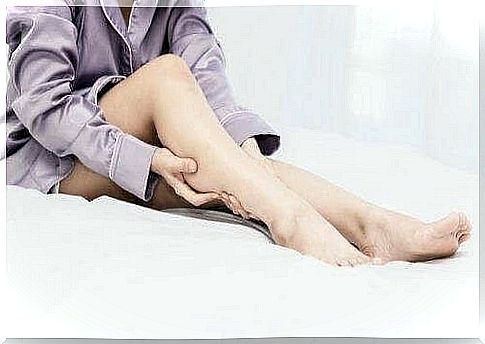Restless Legs: Causes And Treatments

Restless legs are a neurological disorder that causes discomfort in the lower extremities during rest. This disorder is also called restless leg syndrome or Willis-Ekbom disease and it affects 3% of the population.
Restless legs cause intense discomfort, thereby preventing proper rest. The strangest thing about it is that it can relieve the discomfort when moving or walking.
Causes and characteristics of restless legs
The urge to move his legs at rest is the primary symptom of this disease. Although it is most common after the age of 40, it can still manifest itself at any age and it can affect both men and women.
Moreover, there are also some who are more vulnerable to this condition. 20% of the cases are due to anemia, the last trimester during a pregnancy or certain types of medication.
One specific cause is a change in dopamine function. When this neurotransmitter does not function in the nervous system as it should, it directly affects the motor skills. It especially affects people with low iron levels, which are the basic nutrients of dopamine.
Symptoms of restless legs
This discomfort in the legs usually manifests itself after a considerable period of rest. It can occur after a drive or flight, or when, for example, you have sat down for half an hour in the cinema.

It manifests itself as a tingling sensation in the legs. The person then experiences an urgent need to move his legs. Simple things like stretching, walking or shaking your legs can relieve the feeling.
The primary characteristic of restless legs is that it gets worse in the evening. For this reason, the condition is often associated with something else called periodic bone motion syndrome, which is characterized by nocturnal spasms.
If the symptoms coincide with the established protocol, the specialist / doctor will examine the patient. They then perform a neurological evaluation and take blood samples to find out the patient’s iron and ferritin levels.
Then a polysomnography (a form of sleep examination) is performed to find out the sleep activity and then an immobilization test. In this way, the doctor can determine the patient’s sleep quality.
The physician should also rule out possible damage to the patient’s peripheral nerves in the legs. This is analyzed using electromyography and examination of the nerves.
Examination of relevant aspects
By looking at your health history, your doctor can discover relevant information. This can be, for example, family members who also suffer / have a bit of restless legs. This can be a major risk factor for this syndrome.
To make a diagnosis, the doctor must know the patient’s reaction to dopamine medication, which is used to treat this condition. The doctor should also check if the condition is stable or developing.
Treatment of restless legs

Proper treatment depends on the specific diagnosis. A person with iron deficiency who suffers from restless legs will probably only need to take iron tablets and ferritin supplements.
This syndrome can be treated both naturally and with medication. In the latter case, there are certain types of medications that increase dopamine levels and they are used to relieve the symptoms.
Dietary supplements with iron and calcium help relieve the discomfort. Muscle relaxants are also recommended for the treatment of this syndrome. But you need to keep in mind that these remedies are not recommended during pregnancy.
As for natural remedies, you can resort to massage, daily exercise and cold compresses on the legs. Exercise, such as yoga or pilates, can also help relieve discomfort. In addition, you should avoid caffeine, alcohol and tobacco.









